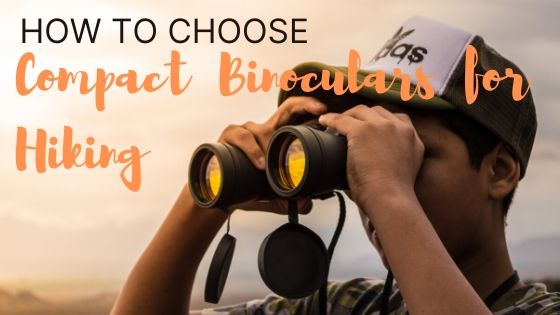Binoculars are designed to bring clarity to your outdoor adventures. Some hikers consider the field of view, others the magnifying power, size, durability, and price. However, the most important thing to consider is the ease of use and optical performance.
Compact Binoculars for Hiking
Since size and weight are of concern when going hiking, you ought to consider binoculars with a magnification power of 8 or 10 and an objective lens diameter of less than 28 millimeters. In addition, a pair with a rubber coating is more durable. You should also consider waterproof models.
Considering the age of online shopping, how can you choose the best compact binoculars for hiking? Here are several ways that will help you pick out the best compact binoculars for hiking.
Type of Prism
Compact binoculars have two types of prisms – Porro prism and roof prism. The type of prism will determine the design and shape of the binoculars. The binoculars with roof prism have a straight alignment of the eyes and lens. This gives the binoculars a compact and streamlined look.
On the other hand, in the Porro prism compact binoculars, the lens and the eyepiece are not in a straight line. The glass elements are set offset from each other, and this allows for better optical efficiency. This gives the Porro prism compact binoculars a chunkier shape. However, they have a wider field of view and greater depth capacity.
Understand the Numbers
Before deciding on a compact binocular, you should take note of the specifications. The model’s numbers refer to the binocular’s magnification power and the objective lens diameter.
For example, in the 8X42 binoculars, ‘8’ is the magnification power, and ‘42’ is the diameter of the objective lens in millimeters. The size of the objective lens will give you an understanding of how big the binoculars are and the amount of light it can gather.
Magnification
The ideal magnification for hiking is between 8x and 10x. Compact binoculars with a magnification power of between 6x and 10x produce more stable images and are best suited for hiking.
Angles of View
The angle of view refers to the maximum view you can see through the compact binoculars. The angles of view are expressed in degrees, where 1 degree of angular view is equivalent to 52.5 feet at 1000 yards. When choosing compact binoculars for hiking, you are best placed to go with a pair that has a high angle of view.
Focusing System
The focusing system on compact binoculars determines how easy it will be to adjust the views. Most compact binoculars for hiking have individual focusing mechanisms on each eyepiece, which allows for the individual focus of each lens.
Zoom Compact Binoculars
Zoom compact binoculars, as the name suggests, come with adjustable magnification power. Most zoom binoculars have a magnification of between 7x and 10x with a 27 mm objective lens. The adjustment is made via a level or a wheel closer to the thumb.
A pair of zoom compact binoculars is a plus as it allows you to change the magnification without dropping the sight. However, zoom compact binoculars sacrifices the sharpness of the image. They come in handy for bird watching while hiking.
Conclusion
Picking the right compact binoculars for your hiking trip allows you to get value for your money while fulfilling your hiking needs. For more information on compact binoculars, read this useful compact binoculars buying guide, which looks into everything you need to help you make the right choice!
Guest Blogger: Sarah Duke

